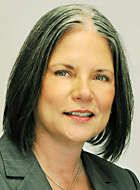
What do you do when a resident crosses the threshold and your organization needs to address quality of death? We all know that there is a great emphasis, appropriately so, on a resident’s quality of life. The flip side of that coin is providing a resident with a quality death.
Organizations contract with hospice or develop their own comfort care, palliative care or end of life programs but do they really look at the implementation of all aspects of such a program with a critical eye? We develop lists of what the resident/legal representative wants or do not want done as the resident nears end of life. Does the resident want to be hospitalized? If so, under what circumstances?
Does the resident want antibiotics? What about lab tests? The lists differ by organization and are very clinically focused. Sometimes there appears to be a void to any thought being given to what music a person would like to listen to, what book he or she would like to hear or be read aloud, or if someone could occasionally sit quietly and say a prayer with them.
What is “quality of death”? It is recognition that the resident is dying and that we need to make it a caring and peaceful experience.
Does it always happen? Probably not even with the best of planning. Years ago, I was a director of nursing services in a building that had health-related facility (HRF) and skilled nursing facility (SNF) units, and when a resident’s condition declined there was always a move from a HRF to a SNF unit.
One day, a longtime HRF resident quickly deteriorated and a move was planned to an SNF unit. The staff on the HRF unit were determined to care for the resident’s increased needs with the limited staff they had.
Not only did they care for this resident, but staff from other units found the time to sit with her, read to her, make beds or cover other assignments so a familiar face/voice could spend time with the dying resident, meet her care needs and just provide comfort to this lady, who did pass away peacefully. Everyone was saddened over the resident’s death, but there was a sense of accomplishment in providing quality care while the resident was dying, which resulted in a quality death.
When you make rounds and visit a resident who is nearing end of life, what kind of assessment do you do? Do you develop a plan that really meets that resident’s needs in their final hours or do you use that cookie-cut care plan that covers all the basics but lacks individualization? Do you really look at the resident’s surroundings, the staff’s interaction or lack of interaction with the resident, in addition to assessing their physical appearance for evidence of pain and shortness of breath?
I believe that everyone’s goal related to a resident’s dying experience should be like that of an oncologist who once described the impending death of one of his patients: “It will be a glorious death; she will just slip quietly away.”
I believe we all want the residents entrusted to our care to pass quietly from this world and know that we provided a quality death.
Linda Elizaitis, R.N., RAC-CT, B.S. is president of CMS Compliance Group, a regulatory compliance consulting firm. She oversees the development of quality improvement / QAPI programs, system correction/enhancement related to survey preparation and outcomes, new program development and other initiatives for the firm’s clients.




